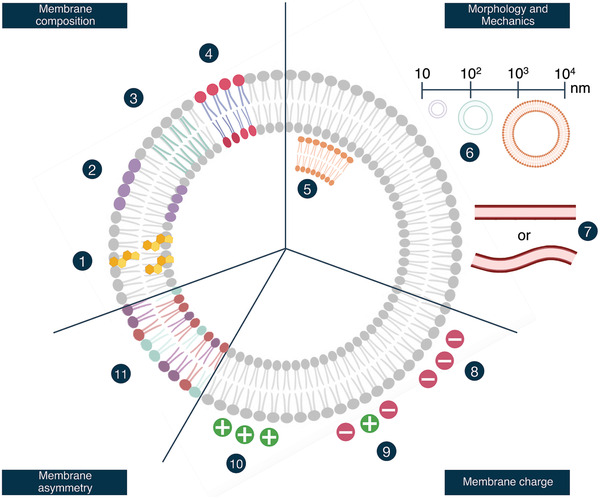Figure 1.

Overview of key compositional parameters of liposomes and EVs. Liposomes typically contain increasing levels of 1) cholesterol to improve vesicle stability and also in EVs high levels of cholesterol have been reported. Liposomes can be made from various lipids, with different 2) head groups, 3) chain lengths, and 4) chain saturation. This also holds true for EVs, which have shown highly complex lipid compositions. Together with cholesterol content, the characteristics of the lipids present are key parameters for pharmacokinetic properties. 5) Lamellarity and 6) size depend on the method that is used for the production of liposomes. 7) Fluidity and mechanics of the membrane are dependent on the mixture of the different lipids and cholesterol that is being used. In EVs, only limited control over (5–7) is present. 8–10) The net charge of the vesicles is dependent on the mixture of the different lipids and cholesterol that is being used. EVs typically carry a net negative charge, whereas for liposomes this parameter can be controlled. 11) EVs potentially have an asymmetry in their lipid bilayers. Incorporation of this feature into liposomes is part of ongoing research.
